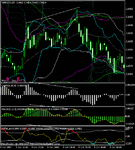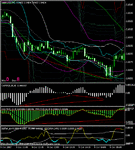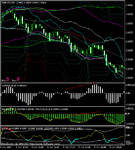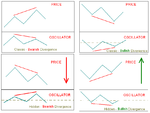Hi Dentist007
The bubble thread on Forex-tsd certainly appeared to be a good thread with a thorough understanding of peak/trough/supp/res/sbr/rbs analysis. I have no real idea why Bubble deleted it, and I don't have the manual that he is now supplying to the members of his select group of 25 for a fee. Thanks for posting the thread summary here though, I am sure that many should find it useful.
At the time the thread was live, I emailed a trading pal of mine the the link, and indeed posted a link here extolling the thread. I remember thinking that it was the single best and most important thread on the very basics of technical analysis (price action around supp/res) that I had seen on any forum in a long time.
The observations contained in the thread concerning those subjects so closely matched my own (and others) that it helped to clarify my own thinking and the further development of my own trading edge in terms of trend re-entry set-ups in areas of optimum wider importance.
Interestingly Trader_dante has recently commenced a thread here on T2W which is akin to Bubble's thread, talking about finding high probability re-entries to existing trends based around price action and a confluence of trend lines/fibs and ma pullbacks on the Hourly and Daily at identifiable Supp/res areas. He acknowledges the james16 price action and 5min intraday system (ma pullbacks) over at forexfactory as the basis of his own developed methodology, and again, I would commend his thread as one of the best I have seen so far on this whole trend/supp/res/price action subject. (s)
Bubble's descriptions of the types of trend were useful in categorising how a trend behaves at different stages of it's existance. Arguably the 'Blow-off trend' is the most difficult to get involved with because it doesn't pull back into what you may have identified as an area of sbr/rbs, ie in the example of an uptrend, somewhere between the last now exceeded higher swing high and higher swing low, the normal trend effectively pulling back to the higher swing high and the creeping trend to somewhere between.
In terms of high probability entry/exit methods for getting involved in these categorisations of trend are concerned, interestingly I spent a very productivefew days last week in chat with another trader really trying to drill down on the highest probability entry points, so the subject is currently at the top of my agenda.
Firstly I think it is important to identify what type of trend is developing/present on the time frames you trading, and sticking with Bubble's classifications, whether it is indeed a normal, creeping or blow off trend. This is important because it is no good sat waiting for a pullback to the last rbs/sbr that occurs in a normal/creeping treeping trend, if it is a so-called blow-off trend that is developing.
Although I broadly concur with his limited observations on when these type of trends occur, On the lower time frames, I tend to find that it is the creeping trend that develops most. As the trading day develops I make a seperate note of sbr/rbs areas that occur on my intermediate time frame and above and where those areas occur on more than one time frame.
Generally speaking I am looking for 4 distinct technical set-ups involving 1 or 2 band deviation/extreme deviation and hidden divergence in the oscillators on my trigger time frame at an sbr/rbs area on my intermediate time frame+. (What I class as a Reentry type 1, 2 3 or 4.) Should there be a deeper pullback (sticking with the uptrend example) ie price sells through the last potential rbs zone extreme, ie the higher swing low, on my intermediate chart, I will still look to re-enter the trend in the next intermediate rbs zone , so long as that potential rbs zone is coexistent with one on my next/longer time frame. In these situations I am now looking not for hidden divergence in my trigger oscillatios but regular divergence / extremes and now hidden divergence on my intermediate oscillators. Ie I am looking for one of my reversal set-ups to be present on my trigger chart confirmed by a Reentry set-up on the intermediate. (Reversal set-ups I identify are: Reversal type A, type A [ii], type B, type B [ii], type C, Extreme and Extreme [ii.] )
Generally speaking the more time frames that an identifiable sbr/rbs zone exists on, the stronger that zone is likely to be if tested.
Also, the stronger the trend and it's relationship to the prevailing ATR of the instrument you are trading, the greater the chance becomes of a deeper pullback into perhaps an rbs/sbr zone that is identifiable on your longer time frame zone (and others.) If this occurs then I am looking for a Reentry set-up on that time frame confirmed by a Reversal set-up on the intermediate and trigger time frame.
As you know, I tend to use repeatable indicator patterns for a re-entry signal beacuse on these lower time frames, price action can be noisier than say an hourly trigger.
Although my indicator based set-ups present themselves on all time frames, they are just a mechanism for (i) indicating whether any given identifiable level of sbr/rbs may be in play and (ii) fine tuning the entry point.The most important aspects of getting involved with a trend is the identification of price action behaviour around supp/res/sbr/rbs on your chosen time frames.
In terms of other high probability ways of getting involved in trend, the advice would have to find the methodology that is right for you within the broad context of trend/price action and supp/res analysis, and specifically
a. identifying the trend that you wish to become involved with
b. identify the potential rbs/sbr (as appropriate) that exists on that and the time frames surrounding that time frame, ie if thatis your longer time frame, identify the sbr/rbs on the next time frame down, the intermediate time frame and indeed on that itself. Look too within those sbr/rbs zones a identify if there are any signicant supp/res points that exist on the time frames above your longer time frame
c. Find a methodology that works for you to fine tune your entry if such an area is tested, This may be indicator based, or fibs/trend line or price action or a combination of any of those named and more.




